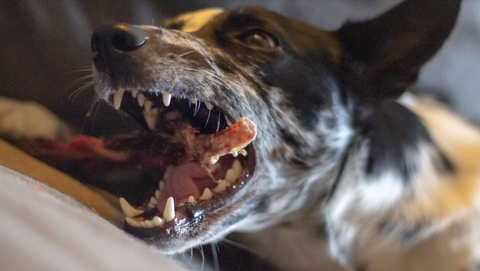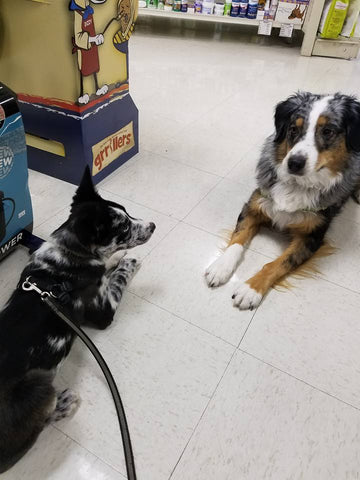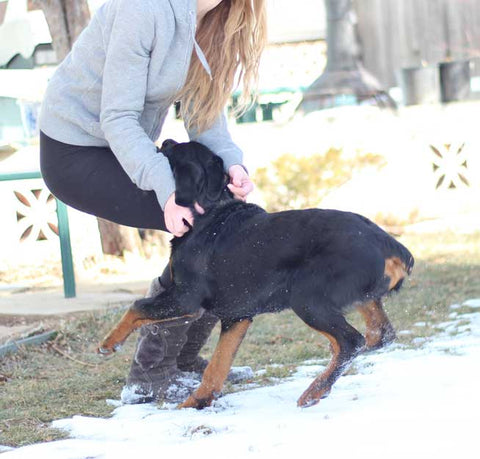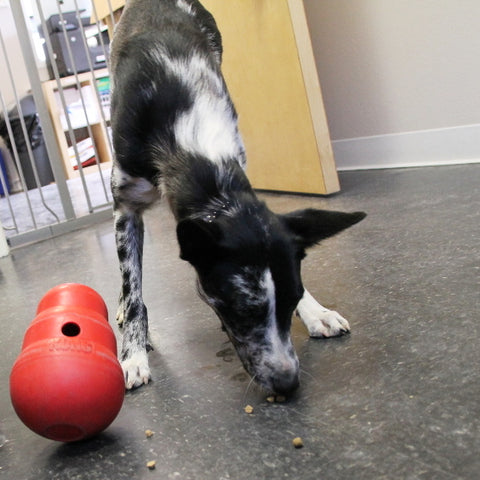My shopping cart
Call us at 888-424-4602 or email us at info@tuesdaysnaturaldogcompany.com for questions about your order status.
Your cart is currently empty.
Continue ShoppingDogs behave in ways that are inherently rewarding to them. We see certain behavior problems crop up in a variety of dogs and owners over and over again, and often it’s because there is a misunderstanding on the human’s end. Fortunately, many common behavioral problems are easy to solve by giving your dog a treat at the right time!
The best training treats are the ones that your dogs will LOVE.
You may be swayed by flashy marketing, or shiny colorful packaging, or persuasive language, but make no mistake - your dog is eating the treat, not you. So pick a treat that you know your dog will enjoy.

Dogs are facultative carnivores, which means that they are very attracted to foods that contain a lot of meat and have a “meaty” odor.
Be mindful of common marketing tactics, such as a large ingredient panel that lists meat as its first ingredient, but is followed with a number of fillers, such as potato starch, pea fiber, ground rice, etc. Those ingredients contribute to the smooth texture of the product, which is appealing to humans, but ultimately dilutes the meat flavor of the treat.

Baked lamb lungs are a very popular treat in dog training circles. Lungs are a type of organ meat and the majority of dogs will love the flavor.

These 95% Meat Bites smell like beef jerky, with a dry, soft and springy texture, and can easily be ripped into smaller pieces for those longer training sessions.
Dog won’t come when called
As much as your dog adores you, sometimes there are more interesting and novel things to smell, see, touch, and taste. Many dogs love to explore! You need to build a history of good things happening to your dog every time they come to you.
How? Give them a treat every time you call them and they come to you!

Your dog will remember coming to you and receiving a tasty treat. If this happens frequently, your dog will be more likely to come when called, even when doing something that’s really, really fun, like chasing a squirrel.
Your dog will also remember if something bad happens when you call them. Have you ever seen someone at the park scold their dog because they took their time coming back to their owner? That person effectively (though inadvertently) punished their dog for coming when called. The next time that person calls their dog, it’s easy to see why their dog will be reluctant to go to them - who knows if they may get punished again?
Give your dog a treat every time they come back to you, BE CONSISTENT, and soon, your dog will happen run to your side regardless of what’s going on in the environment.
Dog seems scared of other dogs / people
A common mistake is forcing your shy dog or puppy to meet lots of other dogs and people, with the hopes that the sheer amount of different interactions will somehow teach the dog to “get over” their fears. This is a method of conditioning called “flooding”, and it isn’t always successful - in fact, it may be harmful to the emotional well being of your dog.
Imagine if you had an intense phobia of cockroaches. What would be the best way for you to get over that fear? Would it be dumping you into a giant aquarium filled to the brim with cockroaches? Of course not!
Dogs are not too different from humans. If your dog is a little fearful of other dogs, the humane way of teaching them to get over their fears is not by taking them to a dog park (with 20+ boisterous dogs that don’t always have good social skills), turning them loose, and letting them figure it out.
“Desensitization” is a common technique used by positive dog trainers. It involves exposing your dog to other dogs in a very controlled way. Don’t walk your dog in areas where people allow their dogs offleash - instead, take them for a walk in areas with a strict leash policy, and everytime you see a dog off in the distance, give your dog plenty of tasty treats. Don’t force your dog to walk up to your dog. When a strange dog is far away, your dog may not even notice them, instead, they will be more focused on you and the treat in your hand. This is what we want! We want to teach the dog that they can just focus on you and that you will protect them. With many controlled and repeated exposures, your dog will soon learn to ignore other dogs, instead of erupting in a fearful display of barking and growling - whether they are far away or in close proximity
Not every dog is a social butterfly who wants to be best friends with every other human and dog they come in contact with. And that’s okay.
Dog jumps on people
Dogs jump on people because they are excited, want to interact with you, and don’t know how they’re “supposed” to behave. You can use training treats to teach them not to jump on people!

When you forcefully push your dog away, or yell “NO”, you’re not communicating with your dog how you want them to behave, so they have no idea that they should be doing something else (such as sitting politely) instead. In fact, you may be inadvertently rewarding your dog for jumping on you in the first place! For some dogs, they may see the pushing as a game.

Instead of telling your dog “NO”, tell your dog what action you would like them to do. Give them a command for a behavior that is incompatible with jumping, such as “sit” or “down”. Practice having your dog “sit” in a location that isn’t very exciting, such as the living room. When your dog sits, give them a treat and praise them! Once they’ve gotten lots of practice sitting in the living room, try it in the kitchen, or the backyard, and then the front yard. Once your dog is an expert at sitting on command at home, start practicing at the park, or the pet supply store. Be consistent with rewarding your dog with lots of treats, and they will eagerly sit when you ask them to, even when greeting someone new for the first time.
Dog is destructive
Most dogs are very intelligent and full of energy. A 5-minute leashed walk twice a day doesn’t cut it for many active breeds, such as Border collies, German Shepherds, Siberian huskies, and other “working” breeds. Since it’s unlikely that you can hook your husky up to a sled and go mushing for 10 miles, or use your collie to herd a flock of dozens of sheep, you’ll have to provide enrichment in other ways.
Smart dogs don’t like to sit around and do nothing all day. Smart dogs want to have a job to do, they want to feel like they have a purpose in life - just like humans! Imagine if there was nothing for you to do all day, except for sitting on the couch. You may try to find ways to occupy or amuse yourself. Dogs who become destructive, and chew on furniture, or other inappropriate objects, are often bored and are in need of exercise.
An easy way to provide some enrichment and mental stimulation is with training treats.

Please note that there is a difference between dogs who are destructive because they’re not getting enough exercise, and dogs who become destructive when left alone due to separation anxiety. Dogs with separation anxiety should be evaluated by a behavior professional.
Potty training a dog
Puppies don’t magically know that they need to potty outside, away from your carpet and furniture. You need to show them where you want them to potty, and using a treat helps communicate to your puppy when they’ve pottied in the correct spot.
Puppies will almost always urinate after waking up from a nap, drinking water, eating, and playing. By knowing that, you can accurately pick the correct time to pick your puppy up and take them outside to go potty.
For example:
Your puppy wakes up from a nap. Immediately pick them up, take them to a grassy area, and as soon as they potty, give them a treat and praise them! Do this consistently, multiple times a day, for several days in a row. After a while, you can encourage your puppy to walk with you outside, instead of carrying them. Once you’ve done enough repetitions of rewarding your puppy for pottying outside, they will start “asking” you to be let outside (which may include behaviors such as waiting at or pawing at the door, or whining or barking). Continue giving your puppy treats for asking to be let outside or for pottying outside, until you are very confident that they have built a strong habit of waiting until they can go outside to relieve themselves.
Punishing your dog for having an accident will not work, because dogs will have a hard time understanding why you are upset, especially if you find the accident long after it happened. If you come home from work, and see the accident on the floor and start scolding your dog, they cannot rationalize to themselves, “I should’ve pottied outside, but I had an accident inside and that’s why they are mad.” Instead, they will think to themselves, “Wow, sometimes my owner is angry when they come home. What's their problem?!”
Remember, dogs love to learn new things, and they love to make you happy. A well-timed tasty treat is an easy way to teach your dog how to do almost anything you want them to do!